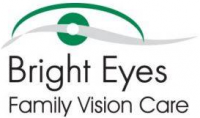Parents and patients alike often ask why therapy homework is such an important part of my vision therapy program. The following is a brief article by Paul Harris, O.D. that does a great job of explaining why we incorporate homework into our vision therapy program.
What's so important about doing my homework?
Home activities have been an integral part of our vision therapy program. The pioneer clinicians in the field noticed that when home practice was done on a regular basis, more profound and lasting changes in behavior were noted. This was passed on to me through my education, but with little scientific backup. The old sages told us it would work and it matched my observations.
I ask my patients to do their home practice on the days that they do not come in for their in-office session, allowing one other day off per week. Thus, the plan for patients coming in once a week was for five days of home therapy to be done between in-office sessions. Over the years my observation has been that patients who regularly got at least three days of practice between their once-weekly in-office sessions made the progress as expected and in many cases did so towards the short end of my estimate of their length of treatment. The patient’s who worked less often than this, moved through the program more slowly and made fewer overall gains from the program. Some tried to compensate for missing several home sessions by practicing at one or two longer home practice sessions. I found that this was not as productive as the regularly spaced short practice sessions.
Once in a while a piece of good scientific work comes along that provides the proof to understand why such a thing is so. I recently ran across the article, "Adult Cortical Plasticity and Reorganization" by the Israeli neurologist Avi Karni. Traditional thought is that we become less plastic (changeable or moldable) as we get older and that in particular our cortices (the gray matter on the outside of the brain) is much less changeable than some other parts of our 'higher' brain functions. Without getting too technical, I relay the portions relative to regular home practice.
Karni found that there were two types of learning that he was able to measure at the level of changes in the cortexes of his subjects. His research was done primarily in areas of vision. He showed that "A fast improvement, occurring early in training, can be induced by a limited number of trials, on a time scale of a few minutes or less, but only if high- quality sensory input is provided." This is what we are doing in your in-office session. Each activity we do in the office is programmed for 8-10 minutes. It is an intense, highly- controlled environment where we expose you to a specific aspect of vision that we want to help you improve. You perform that action several times in those few minutes. What he found, and which we find in the vision therapy room, is that people make very rapid improvement over a short period of time and then it levels out. It may actually be counter productive to push for more progress in that particular activity in the session in which the plateau was reached.
Then Karni found that the person would retain that new level of ability learned in the short practice session, for a period of about 8 hours. He continues, "After this latent period, large and long-lasting improvements in performance were found." And here is the key that is relative to your vision therapy homework: "Performance continued to improve over days and was maximal after 5 to 10 consecutive training sessions spaced 1 to 3 days apart. Once a maximal level of performance was reached, most of the gain was retained over months and even years."
The key to embedding the new behavior or skill is the 5-10 consecutive practice sessions with no more than 3 days between each of the practice sessions. You may note that during your vision therapy some activities are assigned for only one week. This is rare in the program. Most activities will be assigned for two or more weeks. Those activities that are done for much longer are modified as you proceed through your treatment.
In vision therapy we arrange conditions to provide you with the opportunity to have the necessary meaningful experiences to acquire the new skills you need to do the things you want to do. We hope that the activities are made meaningful to you and that you can see the reason why the activities are being done. With the proper support of regular home practice you can make huge changes which will last a very long time.
Reference: Karni, Avi, "Adult Cortical Plasticity and Reorganization", Science & Medicine, January-February 1997, PP 24-33.
Last Revision July 19, 2001 written by Paul Harris (Paul.HarrisOD@gmail.com)
Nathan Bonilla-Warford, OD
Bright Eyes Family Vision Care
Located in the Westchase area of Tampa.


Leave a Reply